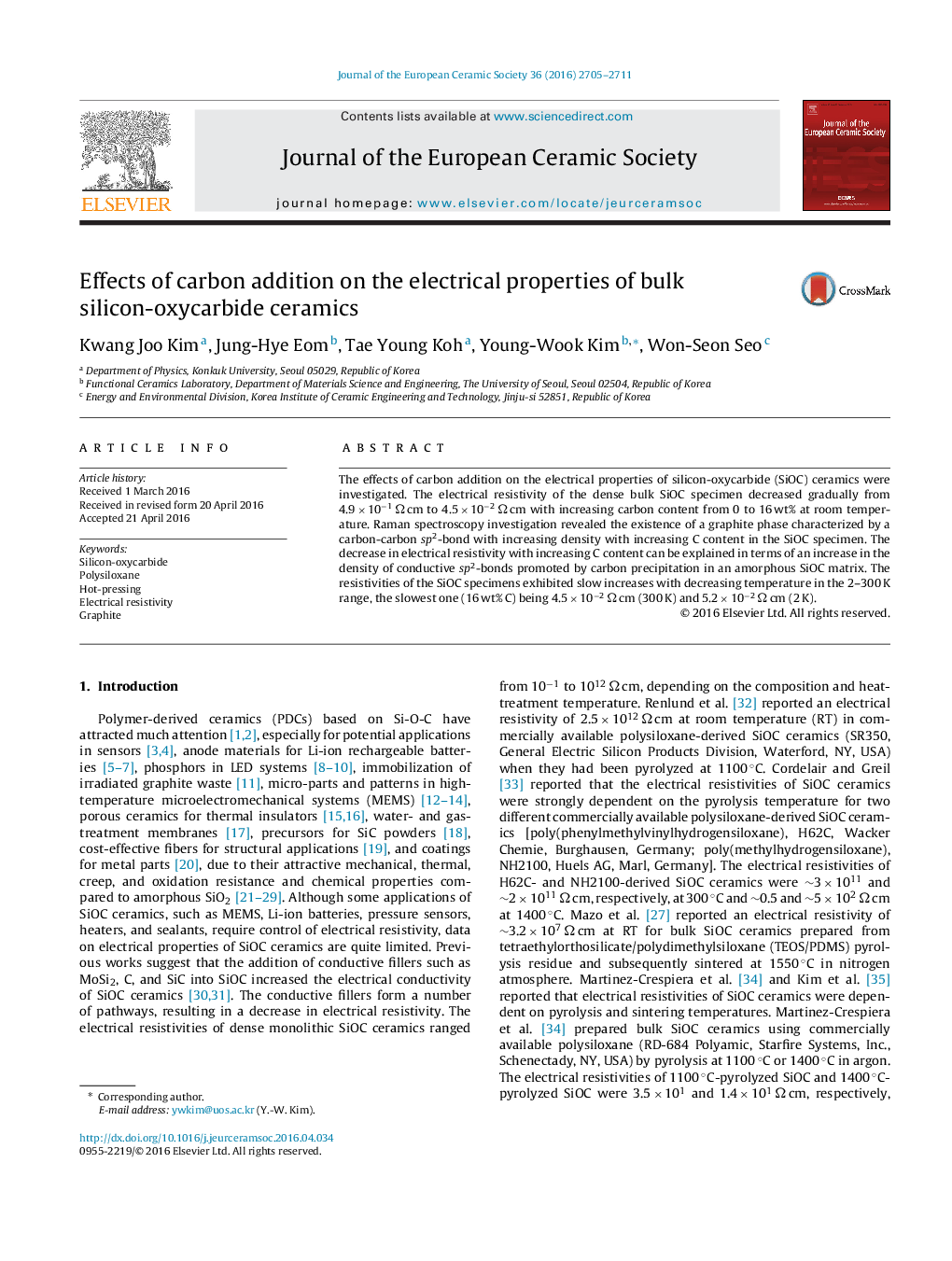| Article ID | Journal | Published Year | Pages | File Type |
|---|---|---|---|---|
| 10629249 | Journal of the European Ceramic Society | 2016 | 7 Pages |
Abstract
The effects of carbon addition on the electrical properties of silicon-oxycarbide (SiOC) ceramics were investigated. The electrical resistivity of the dense bulk SiOC specimen decreased gradually from 4.9 Ã 10â1 Ω cm to 4.5 Ã 10â2 Ω cm with increasing carbon content from 0 to 16 wt% at room temperature. Raman spectroscopy investigation revealed the existence of a graphite phase characterized by a carbon-carbon sp2-bond with increasing density with increasing C content in the SiOC specimen. The decrease in electrical resistivity with increasing C content can be explained in terms of an increase in the density of conductive sp2-bonds promoted by carbon precipitation in an amorphous SiOC matrix. The resistivities of the SiOC specimens exhibited slow increases with decreasing temperature in the 2-300 K range, the slowest one (16 wt% C) being 4.5 Ã 10â2 Ω cm (300 K) and 5.2 Ã 10â2 Ω cm (2 K).
Related Topics
Physical Sciences and Engineering
Materials Science
Ceramics and Composites
Authors
Kwang Joo Kim, Jung-Hye Eom, Tae Young Koh, Young-Wook Kim, Won-Seon Seo,
